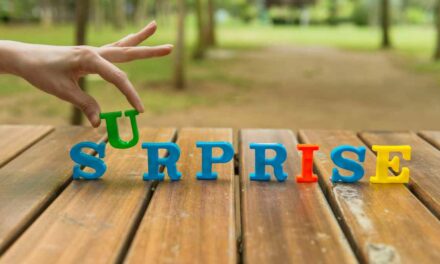
JULY 23, 2021
Hey … our Discord community just hit 100 members. Come join us with your questions, comments, and struggles as a content entrepreneur.
full tilt
DAO, The Web 3.0 Business Model, Will Be Everywhere in 2022
Dao is a philosophical Chinese term that’s literal meanings include path, road, and method.
Those definitions also work well to help content entrepreneurs to understand DAO – decentralized autonomous organizations. Technically, DAOs are an entity represented by rules encoded in a transparent computer program controlled by its members and not influenced by a central government. It’s on the blockchain spectrum.
Simply put, a DAO is not controlled by any one entity and all governance is done as part of a collective. DAOs are picking up steam as the business model of choice for the Web 3.0 era.
For you, they can be the path or method to cultivate your social or media business without reliance on traditional financing and corporate rule-making. (Bitcoin is an example of a DAO.)
Ethereum’s explanation may help further your general understanding. DAOs allow:
- Member-owned communities without centralized leadership
- A safe way to collaborate with internet strangers
- A safe place to commit funds to a specific cause
A DAO requires:
- Set of operational rules
- Funding like tokens that can be spent to reward members (often with a crowdsource funding component)
- Voting rights for establishing the operational rules
How does that work for a content business? Let’s discuss.
The Tilt Advice
As enthusiasts (and early adopters) for creator coins, alternative methods to business creation, and more, we want to get DAOs on your radar. Staying ahead of the masses – doing something different than most – often can help one content business stand out from the rest.
“DAOs look to solve core missions – evolving a group chat into a success-driven community,” writes Coopahtroopa. (h/t to Richard Patey for his tweet of the article.)
While they get into detail on all sorts of DAOs in this article, two of the most relevant categories for content entrepreneurs are media and social.
As Coopahtroopa explains, media DAOs “break down how writers, streamers, and readers engage with the content they release.” They can incentivize contributors or govern which topics are covered. Media DAOs turn content consumption into a two-way street.
Social DAOs are more about community-building than financial funding. “Social DAOs turn every group chat into a digital business,” Coopahtroopa writes. “They challenge what it means to be a part of a community and offer ways to lean into becoming part of a digitally native tribe.”
Both media and social DAOs fit well in the content entrepreneur’s model; after all, a content business is all about building and growing an audience. By giving that audience a vested interest in the operation of that business, they are more likely to engage and become loyal to your brand. And they probably are more likely to rise to the level of brand champions or ambassadors, bringing their friends, fans, and followers to you.
Right now, at minimum, DAOs are important to get on your radar. In the next few months, you’ll be seeing them everywhere (and we’ll be talking more about them too), and by 2022, they’ll be more mainstream.
– Ann Gynn
To bookmark this story for future reference as you build your content business, click here.
TikTok Creator Kacie Burns Creates Content Business After Viral Video
Entrepreneur and Biz: Kacie Rose Burns
Tilt: Real experience of living abroad.
Channels: TikTok (662K) Instagram (89.8K)
Rev Streams: TikTok creator fund, sponsored content
Our Favorite Actionable Advice
- Fill a gap: Just because you want to create in a crowded space, like travel influencers, doesn’t mean you can’t find a niche that needs to be filled.
- Get your audience involved: Kacie uses her viewers to help in content-making decisions.
- Publish consistently: Once you capture the audience’s attention, continue regular delivery of your content to keep them interested and engaged.
Some of the Story:
If you’ve watched the Netflix show Emily in Paris, you probably have an idea of what it’s like to become a social media influencer who chronicles her life abroad. But Kacie Rose Burns isn’t like many travel influencers who just post about the perks of living in another country. The self-proclaimed “American girl living in Italy” also gets real about homesickness and culture shock.
But before we get to that, let’s explain how it started in January 2021.
“To be completely honest – it was a complete accident. I never posted anything or used TikTok really other than to watch videos of cats and cooking recipes, and I posted a photo maybe once every month on my Instagram. I really wasn’t a social media person at all,” she says.
In January 2021, that changed. Sitting on a plane to Italy with her boyfriend Dario, she posted a TikTok about their relationship. “Fifteen hours later, after we finally arrived in Italy, I opened the app to see the video had gone viral.” Since then, their TikTok has amassed over 800K views and 169K likes.
Success leads to content business
Now living in Italy, she began posting more videos to her account. “After our flight, we were in mandatory quarantine for two weeks, so I decided to use that time to create short videos about Italian culture, travel tips, and all the fun and interesting things I find as an American living here. And the rest was history,” she says. “When I realized how much I loved helping people plan their travels and understand different cultures, I knew that I could turn content creation into a business.”
There are plenty of travel influencers on social media who share their best tips. But Kacie couldn’t find any accounts that chronicled their experiences living abroad, a gap that may have existed because of the pandemic.
“There’s a missing piece in a lot of travel accounts, which is simply sharing what life is like abroad and how it differs from your own country. There are different social norms, culture differences, food differences, and how simple everyday things, like ordering a coffee or making a restaurant reservation might not be done the same way in a different country.”
Kacie delves into these minute details, and her audience loves to hear about them. “I think culture differences are incredibly cool, and learning about them helps open your mind and expand your viewpoint of the world.”
– Bonnie Azoulay
All the Story: To learn more about how Kacie is bringing in content revenue while working as a part-time English instructor and her advice for content entrepreneurs, check out the longer version.
quick talk
Caught on … Twitter
“Remember when you realized your parents didn’t know everything? Well, the same is true for creators you look up to … That means YOU can do things YOUR way, and not follow the ‘best practices’ you read about.” – Jay Clouse
things to know
Money
-
Surviving dips: Once established, set up money management for the long term so you can weather short-term fluctuations, says Karat Financial founder (and Instagram creator) Eric Wei. (LinkedIn News)
Tilt Take: Your personal and business finances must be structured so you save in good times to sustain you in not-so-good times. -
New Substack sense: Newsletter platform Substack adds audio content this week with the first three podcasts in its Booksmart Studios. (Axios)
Tilt Take: The move lets newsletter creators launch podcasts without having to use another platform. It looks a lot like its newsletter model – some are free, while others will require a subscription.
Audiences
-
Sing a song: Music content creators have a new outlet. Songfinch is accepting applications for artists who want to join its order-taking personalized song startup. (Trapital)
Tilt Take: Songfinch neglects to say in the public application how much artists make for their creation. With the right percentage, it could be the right opportunity to add a new revenue stream for music content entrepreneurs. -
Thumbs up: Reply, retweet, and like might not be the only reactions on Twitter. It’s testing upvotes and downvotes in several formats (arrows and thumbs). In this phase, the votes aren’t public. (Twitter; h/t (The Verge)
Tilt Take: Reactions on Twitter now generally indicate acceptance or praise (unless you type a comment in the retweet). It’s good to see positive and negative options.
Tech and Tools
-
All welcome: Clubhouse is no longer “exclusive.” “After 16 never-boring months of building, we’re thrilled to share that Clubhouse is now out of beta, open to everyone …” (Clubhouse)
Tilt Take: Wait, wasn’t exclusivity the big differentiator that brought in 10M+ members? Now, Clubhouse is like every other social platform with an audio component. -
Watch and listen: YouTube’s the most popular platform for podcasts, according to the recent Digital News Report. The finding is based on a sampling of 2K digital news consumers. (What’s New in Publishing)
Tilt Take: We’re glad to be reminded that audio isn’t limited to audio-focused platforms. YouTube may be known for video, but those videos also come with sound. It’s something audio content creators should think about.
And Finally
-
TikTok secret: An investigation by The Wall Street Journal revealed: “TikTok only needs one important piece of information to figure out what you want: the amount of time you linger over a piece of content. Every second you hesitate or rewatch, the app is tracking you. (The Wall Street Journal)
Tilt Take: An in-depth investigation into what makes TikTok tick by a major national business-focused newspaper? Yep, it’s another sure sign the creator economy isn’t a trend.
we’re a stan for Jamie Silva
Epicurist Jamie Silva is the driving force behind the lauded blog A Sassy Spoon. Before being name-dropped in Buzzfeed and MSN, the Cuban-American chef, who specializes in recognizable American classics and dishes from her heritage, was a digital marketing and health care professional. She blogged because of her fascination with all things related to HTML and the web.
The self-proclaimed “child of the internet” launched many online endeavors that didn’t take off – selling paper invitations, shipping supplies for animals, and providing social media management services. It wasn’t until 2016, when Jamie quit her comfortable full-time agency job and used her free time to write and upload images of tasty meals, that she found a hit. It was a logical progression for someone who had been a Yelp Elite reviewer, traveling and rating new restaurants.
In 2019, Jamie broke down her earnings in an annual food blog income report for her readers, revealing she pocketed $63K in advertising income with AdThrive and almost 30K in sponsored content.
Why we’re a Stan: Jamie has combined three of her passions – cooking, the internet, and business – to become a successful content entrepreneur. Her behind-the-scenes approach to her business and her blog makes it easy to see what she’s doing and what that means to the bottom line. We also like how she makes it easy for potential partners to see how they could work with her.
the business of content
Listen to this week’s Content Inc. podcast, which includes a fascinating interview with the three key members of Teach Better. They discuss origin story, audience-building techniques, revenue strategies, and strategic planning.
In the latest This Old Marketing, the boys rant about mainstream marketing media talking about marketing spend going down when they have absolutely no idea they are using the wrong metrics.
the tilt team
Your team for this issue: Joe Pulizzi, Ann Gynn, Laura Kozak, Marc Maxhimer, and Dave Anthony, with an assist from Bonnie Azoulay, Shameyka McCalman, and Don Borger.
Get more of the Full Tilt stories on TheTilt.com.
Know a content creator who’s going full tilt? DM us or email [email protected]
Was this email forwarded to you? Get your own sub here.
Copyright ©2021 Tilt Media LLC All rights reserved.
Unsubscribe | Update your profile | 17040 Amber Drive, Cleveland, OH 44111





